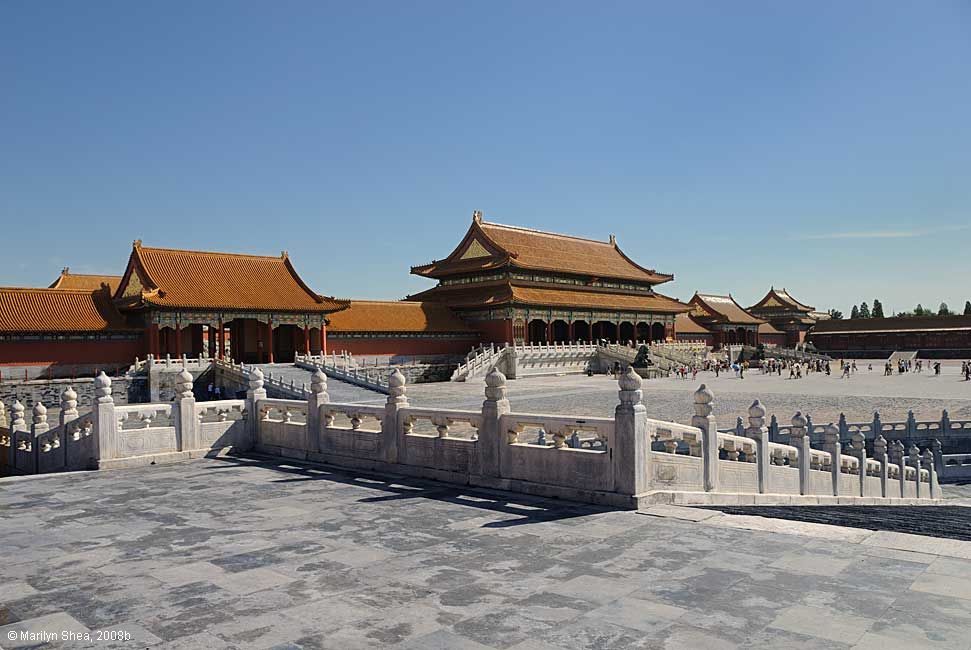 |
| The Gate of Supreme Harmony太和门 (Tàihé Mén) has two small gates flanking it. During the Ming Dynasty they were called the East and West Corner Gates (东角门/西角门).
During the Mong Dynasty, the West Corner Gate (on the left in the picture) was used for meetings with government ministers during periods of mourning or on days designated to mourn important ancestors, usually the anniversary of a death. In Chinese culture, death is kept at a distance. By having a special place to conduct normal business during a mourning period, the normal offices and palaces would not be tainted with the memory of death. Most cultures have traditions to avoid the idea or concept of death. On the one hand the departed are honored and loved, and on the other hand we fear death and don't want to be reminded of mortality. In everyday life the number four 四 is avoided in things like telephone numbers because it is pronounced as "si" as is the character for death 死. The East Corner Gate was chosen by Emperor Yongle 永乐 (Yǒnglè) for the offices of the Grand Secretariat 内阁 (Nèigé). The Grand Secretariat had been established by his grandfather, Emperor Hongwu, in 1382 to handle administrative details and schedule his appointments. There were six secretaries drawn from the scholar class who would read documents and decide which to pass on to the emperor. They were responsible for drafting many of the documents that came out of the emperor's office. The emperor would meet with his various ministers and heads of departments himself, thus making sure that underlings did not have the chance to concentrate power. The Grand Secretariat was to be a simple bureaucratic convenience. It became much more than that. The secretaries did not have direct power, but they did have control over information and a major say in who had access to the emperor. Over time, the secretaries managed to acquire more and more power. They got themselves appointed to various ministries and so had both direct and indirect power. When Emperor Yongle moved the Ming Dynasty to Beijing, he kept the organizational structure designed by his grandfather. He met with his ministers and his secretaries in the East Corner Gate to conduct ordinary business. Eventually, both gates received new names. The East Corner Gate was renamed Gate of Spreading Administration (Hongzheng men) to describe its function during the Ming Dynasty, and was renamed again by the Qing (1644-1912) rulers. Under the Qing it was called Gate of Manifest Virtue 昭德门 (Zhāodé Mén). The West Corner Gate was renamed Gate of Proclaiming Governance (Xuanzhi Men) by the Ming Jiajing Emperor in 1562. The Qing Dynasty changed that to the Gate of Correct Conduct 贞度门 (Zhēndù Mén). On November 18, 1918, the Gate of Supreme Harmony was the site of the celebrations at the end of World War I and the victory over Germany. President Xu Shichang 徐世昌 (Xú Shìchāng, 1855-1939) hosted the event to welcome back soldiers who had served in the war. Once again, the Outer City was used for the formal gathering for which it was intended. The Ming emperors used to use the Meridian Gate for receiving victorious armies, but this is a much nicer setting. |
http://hua.umf.maine.edu/China/HistoricBeijing/Forbidden_City/index.html
Last
update: January 2010
© Marilyn Shea, 2009